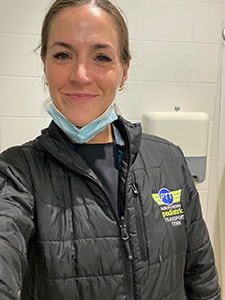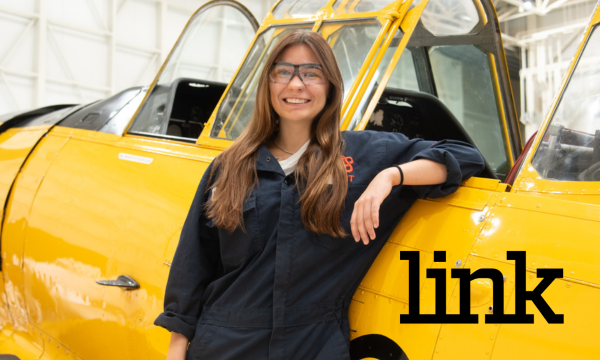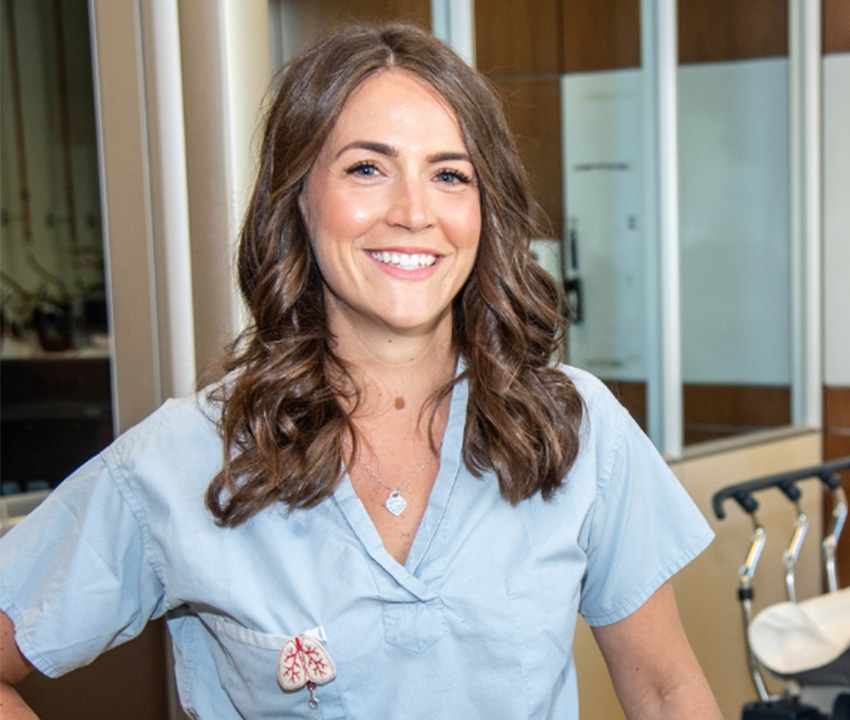SAIT's Respiratory Therapy (RT) program officially turned 50 years old in 2020. Celebrations were delayed due to the pandemic, but this Fall, the institute marked the milestone anniversary.
To honour the program's legacy, LINK magazine sat down with 2016 RT graduate Kelsey Freeman (nee Thibault), who has been working in neonatal and pediatric intensive care as a Respiratory Therapist for the past six years.
We last spoke with Freeman in 2019 about her role in responding to the 2018 Humboldt Broncos bus accident. Freeman's experience with the Broncos was deeply traumatic, but it inspired a passion for bettering mental health support for frontline medical workers.
Since the accident, Freeman has engaged in trauma-informed peer support with her neonatal and pediatric intensive care unit (ICU) teams in Saskatoon. She's also given talks on the topic at SAIT and at national conferences. The COVID-19 pandemic tested her coping skills and ultimately strengthened her team's ability to support each other.
“There's power in seeing your colleagues be vulnerable, saying how they're feeling instead of, 'I'm fine.' Not everyone is fine all the time.”
 Today, Freeman continues to advocate for creating safe spaces at work where medical staff can be open about their feelings in the wake of traumatic situations. Along with a growing number of team members at her hospital, Freeman is reducing the stigma around experiencing trauma at work and creating an environment that embraces vulnerability and supports resilience.
Today, Freeman continues to advocate for creating safe spaces at work where medical staff can be open about their feelings in the wake of traumatic situations. Along with a growing number of team members at her hospital, Freeman is reducing the stigma around experiencing trauma at work and creating an environment that embraces vulnerability and supports resilience.
A lot has happened since we last spoke with you in 2019. Healthcare workers, especially RTs, were in the eye of the storm through the COVID-19 pandemic. How did the events of the last few years impact you?
In April 2020, I had my son. The world had literally just shut down. My husband was an RT on our pediatric transport team at that time. It was frightening in healthcare because no one had the answers about how to treat this illness. I returned to work full-time in April 2021, just in time for the Delta variant outbreak that autumn, which hit us really hard. I was working full-time with our neonatal team, but it got to the point where I was helping in the adult ICU all day. Pediatric intensive care ended up taking patients in their 40s — my husband was giving full-grown men teddy bear IVs meant for kids.
Since the Humboldt Broncos accident, you’ve focused on peer support and trauma in the medical workplace. What did that look like for you and your team during COVID?
We are blessed in our department with good working relationships, and we’ve really bonded. COVID was another shared trauma, just like the Broncos accident. As horrible and overwhelming as it was, we had this built-in support group.
Has anything changed about how your team responds to traumatic situations since the pandemic?
It's exciting to see how much more open every unit is to talking about trauma and mental health. We have debriefs where the bedside nurse and RT are upset about something that happened, but we also see the physicians showing their emotions. And the unit clerk talking about how they feel — who you might never think would have an emotional attachment to a situation. There's power in seeing your colleagues be vulnerable, saying how they're feeling instead of, “I'm fine.” Not everyone is fine all the time.
Do you have any advice for students or other RTs about staying resilient?
You have to understand that if you work in acute care, it’s not a matter of if you’re going to see something traumatic; it’s a matter of when. It doesn’t take a mass casualty or seeing a patient pass away in front of their parents — small things can be triggering. As you get more experience and more practice, you learn to accept what happens and what you witness. You can only control giving kids and their families the best experience, the best care, the best chance of survival, but sometimes the hardest pill to swallow in healthcare is that not everything is treatable. Going through that “shoulda-woulda-coulda” loop in your head is a completely normal part of the grief process.

Like what you are reading?
Find more stories from past, present and upcoming issues of LINK magazine!
Oki, Âba wathtech, Danit'ada, Tawnshi, Hello.
SAIT is located on the traditional territories of the Niitsitapi (Blackfoot) and the people of Treaty 7 which includes the Siksika, the Piikani, the Kainai, the Tsuut’ina and the Îyârhe Nakoda of Bearspaw, Chiniki and Goodstoney.
We are situated in an area the Blackfoot tribes traditionally called Moh’kinsstis, where the Bow River meets the Elbow River. We now call it the city of Calgary, which is also home to the Métis Nation of Alberta.
